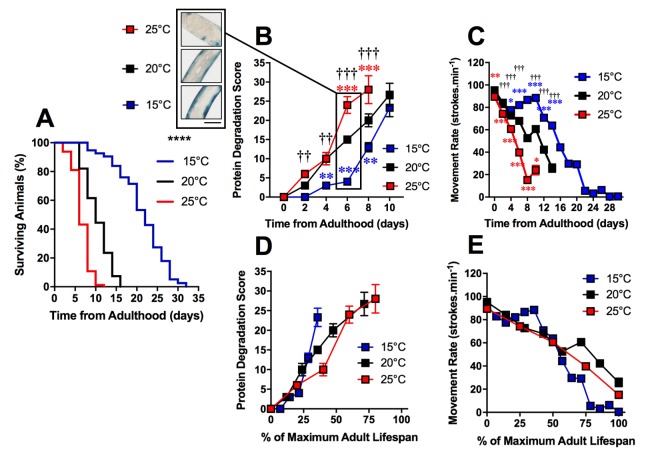Figure 3.
Protein degradation is accelerated in shorter-lived and delayed in longer-lived animals. (A) Temperature was used to lengthen (15°C) and shorten (25°C) lifespan in comparison to control (20°C) in animals with Lac-Z transgene (median lifespan of 22d at 15°C vs. 10d at 20°C vs. 6d at 25°C, P<0.0001). (B) The onset of increased protein degradation appears higher in 25°C animals and is delayed in 15°C animals. At 6d, insert shows that protein homeostasis is maintained at 15°C, somewhat maintained at 20°C and lost at 15°C. (C) Movement rates in animals with LacZ transgene show that movement decline is greater in 25°C animals and delayed in 15°C animals. (D) Rates of protein degradation expressed as % maximal lifespan shows that differences between temperatures are minimized. (E) Movement expressed as % maximal lifespan shows that until 50% maximal lifespan, differences between temperatures are minimized. Beyond 50%, movement rates are preserved in 20°C, but are lower throughout the remainder of the lifespan in 15°C in comparison to 25°C. Scale bar in B represents 80 μm.

